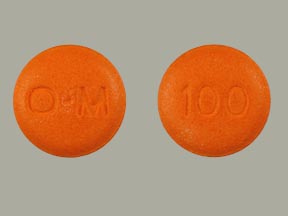
Nucynta Coupons & Savings Card – Discount Prices from $109.80
My prescription
Edit
100MG, Nucynta (30 Tablets)
Select pharmacy

CVS
$564.19
COUPON PRICE
Albertsons
$109.80
COUPON PRICE
Walgreens
$109.80
COUPON PRICE
Walmart
$116.67
COUPON PRICEFree Nucynta Savings Card

Albertsons
$109.80
Show this coupon to your pharmacist
ID
LH2AA9E06D
PCN
HT
BIN
011867
GRP
LABH001
This coupon is not insurance
Related opioids prescriptions
More prescriptions for pain
Related opioids prescriptions
More prescriptions for pain
Price history for Nucynta
30 Tablets, 100MG
Average retail price for Nucynta
Average SaveHealth price for Nucynta
Our price history data is based on aggregated prescription data collected from participating pharmacies in America. Our prescription data updates daily to reflect the latest price changes. If you notice a missing data point, it means there wasn't sufficient data available to generate a monetary value for that date.
*Retail prices are based on pharmacy claims data, and may not be accurate when we don't have enough claims.
Nucynta dosage forms
Dosage Quantity Price from Per unit 50MG 30 Tablets $358.01 $11.93 50MG 60 Tablets $728.01 $12.13 50MG 90 Tablets $1098.02 $12.20 75MG 30 Tablets $475.09 $15.84 75MG 60 Tablets $958.17 $15.97 75MG 90 Tablets $1441.26 $16.01 100MG 30 Tablets $564.19 $18.81 100MG 60 Tablets $1140.38 $19.01 100MG 90 Tablets $1716.57 $19.07
| Dosage | Quantity | Price from | Per unit |
|---|---|---|---|
| 50MG | 30 Tablets | $358.01 | $11.93 |
| 50MG | 60 Tablets | $728.01 | $12.13 |
| 50MG | 90 Tablets | $1098.02 | $12.20 |
| 75MG | 30 Tablets | $475.09 | $15.84 |
| 75MG | 60 Tablets | $958.17 | $15.97 |
| 75MG | 90 Tablets | $1441.26 | $16.01 |
| 100MG | 30 Tablets | $564.19 | $18.81 |
| 100MG | 60 Tablets | $1140.38 | $19.01 |
| 100MG | 90 Tablets | $1716.57 | $19.07 |
Nucynta Warnings
Tapentadol, marketed under the brand name Nucynta, is a medication that requires careful use due to potential risks and side effects. Below are important safety warnings and precautions to consider:
Risk of Abuse and Addiction: Tapentadol is a controlled substance with a risk for misuse and addiction, which may lead to overdose and potentially fatal outcomes. Individuals with a personal or family history of substance use disorders or mental health issues are at higher risk.
Severe Breathing Problems: This medication can cause dangerously slow or shallow breathing (respiratory depression), especially when beginning treatment, increasing the dose, or if taken with substances like alcohol or other sedatives. High-risk groups include older adults and those with existing breathing issues, such as COPD or asthma.
Opioid Overdose: It is crucial to take tapentadol exactly as prescribed to prevent life-threatening overdose. Ensure that the medication is stored securely away from children and others to prevent accidental ingestion.
Interactions with Alcohol and Other Drugs: Avoid consuming alcohol and using other medications that cause drowsiness or slow breathing, such as benzodiazepines and muscle relaxants, while on tapentadol. These combinations can enhance severe side effects.
Precautions for Pregnant Individuals: Pregnant individuals should use tapentadol only when absolutely necessary due to the risk of birth defects or neonatal opioid withdrawal syndrome. Long-term use during pregnancy can lead to the newborn being dependent on the medication.
Physical Dependence and Withdrawal: Regular use of tapentadol over an extended period can lead to physical dependence, with withdrawal symptoms occurring if the medication is abruptly stopped. Gradual dose reduction under medical supervision is recommended.
Low Blood Pressure: The medication may cause low blood pressure, leading to dizziness or fainting, especially when standing up suddenly. Rise slowly from sitting or lying positions to minimize this risk.
Adrenal Insufficiency: Prolonged use may result in low adrenal hormone levels. Symptoms include fatigue, dizziness, and nausea. Medical evaluation and possible corticosteroid treatment may be necessary.
Seizures: Individuals with a history of seizures may experience an increased risk of seizure activity while on tapentadol. Immediate medical attention is advised if seizures occur.
In case of overdose, seek emergency medical help immediately and have naloxone (a reversal agent) readily available as recommended by your healthcare provider. Always discuss any concerns or potential risks with your healthcare professional to ensure safe use of tapentadol.
Nucynta Side Effects
When taking this medication, some common side effects you might experience include nausea, dizziness, vomiting, sleepiness, and constipation. These effects are typically mild and temporary. To manage constipation, consider incorporating dietary fiber, staying hydrated, and exercising regularly. A pharmacist can also recommend a suitable laxative if necessary. To minimize dizziness or lightheadedness, try rising slowly from sitting or lying positions. In addition to the common side effects, some users report headache, fatigue, dry mouth, upset stomach, poor appetite, itching, sweating, anxiety, and difficulty sleeping. While these are usually not severe, contact a healthcare provider if they become bothersome or persist. There are rare but serious side effects that demand immediate medical attention. These include confusion, interrupted breathing during sleep, abdominal pain, difficulty urinating, symptoms of adrenal gland issues like unusual tiredness, weight loss, slow or shallow breathing, fainting, seizures, and severe drowsiness or difficulty waking up. Additionally, be aware of serotonin syndrome, a critical condition that can occur if serotonin levels become too high, especially if taking other serotonin-increasing drugs. Symptoms include a fast heartbeat, hallucinations, loss of coordination, severe dizziness, severe nausea, twitching muscles, fever, and unusual agitation or restlessness. Finally, although uncommon, allergic reactions such as rash, itching, swelling of the face, tongue, or throat, and trouble breathing require urgent medical care. Always consult your healthcare provider if you experience any side effects, whether listed here or not, to ensure your safety and well-being.
Nucynta Interactions
When using Nucynta (tapentadol), it's crucial to inform your doctor and pharmacist about all other medications or supplements you are taking, including prescription, over-the-counter, vitamins, and herbal products. This drug can interact with various medications, which could lead to significant side effects or reduce the effectiveness of your treatment.
Avoid using Nucynta with certain medications such as MAO inhibitors, which include isocarboxazid, Linezolid, methylene blue, moclobemide, phenelzine, procarbazine, Rasagiline, safinamide, Selegiline, and Tranylcypromine, as combining these can result in a dangerous, potentially fatal reaction. It's recommended not to take MAO inhibitors during and for two weeks prior to starting Nucynta. Consult your doctor for guidance on when to begin or discontinue these medications.
Additionally, using Nucynta with drugs that increase serotonin levels, such as certain antidepressants (SSRIs like Fluoxetine, SNRIs like Venlafaxine), or recreational drugs like MDMA, can heighten the risk of serotonin syndrome, a serious condition that requires immediate medical attention.
Combining Nucynta with other medications that cause drowsiness or breathing issues, such as opioid pain relievers (like codeine or hydrocodone), alcohol, marijuana, sleep aids (like Zolpidem), and anxiety medications (like Alprazolam), can increase the chance of severe side effects, including slow or shallow breathing and extreme drowsiness.
Lastly, Nucynta may interfere with certain laboratory tests, such as those measuring amylase or lipase levels, leading to inaccurate results. Ensure all healthcare providers are aware that you are using this medication. Always discuss potential interactions with your healthcare provider to use Nucynta safely.
Is Nucynta the same as oxycodone?
Nucynta and oxycodone are not the same. They are both opioid medications used to treat pain, but they contain different active ingredients. Nucynta contains tapentadol, while oxycodone is the active ingredient in its own formulations. They have different chemical structures and may have different effects and side effect profiles.
Is Nucynta a strong painkiller?
Yes, Nucynta (tapentadol) is considered a strong painkiller. It is an opioid analgesic used to manage moderate to severe pain.
Is Nucynta the same as tramadol?
Nucynta and tramadol are not the same, although both are opioid medications used to treat pain. Nucynta contains the active ingredient tapentadol, while tramadol is the active ingredient in its own formulation. They have different chemical structures and may have different effects and side effect profiles.
What class narcotic is Nucynta?
Nucynta (tapentadol) is classified as a Schedule II controlled substance in the United States. This classification indicates that it has a high potential for abuse, which may lead to severe psychological or physical dependence.
Which is stronger, tapentadol or hydrocodone?
Tapentadol is generally considered to be stronger than hydrocodone. Tapentadol has a dual mechanism of action, working as both an opioid receptor agonist and a norepinephrine reuptake inhibitor, which can contribute to its potency. However, the effectiveness and strength can vary based on individual response and specific medical conditions. It is important for a healthcare provider to determine the most appropriate medication for a patient's needs.
